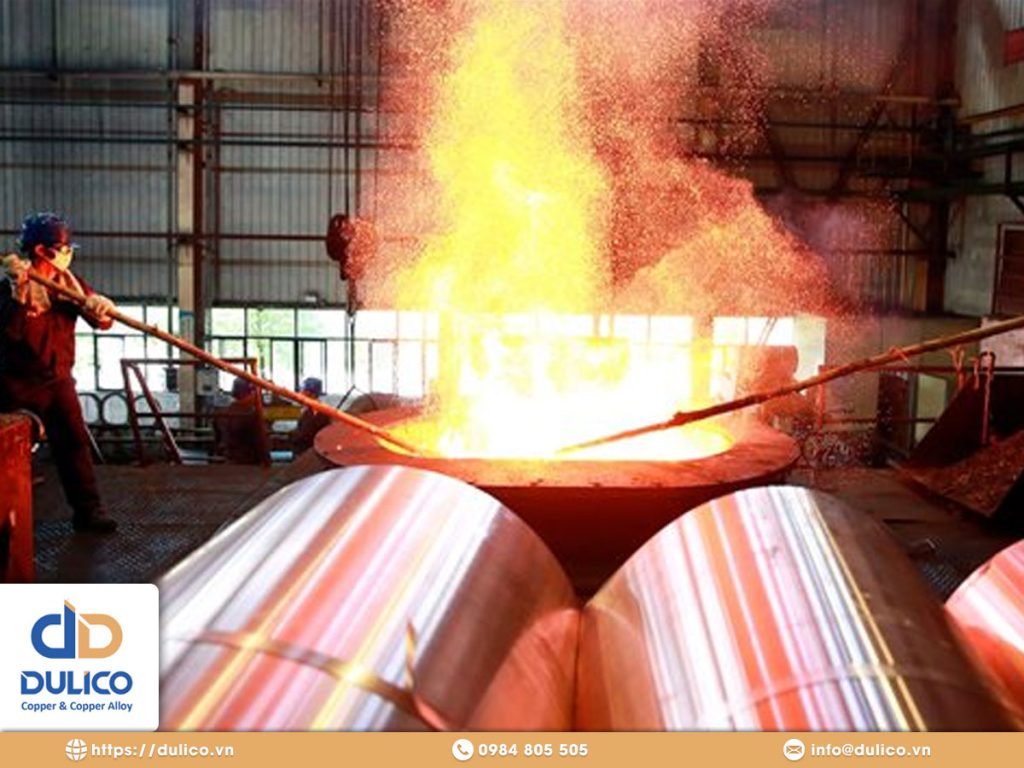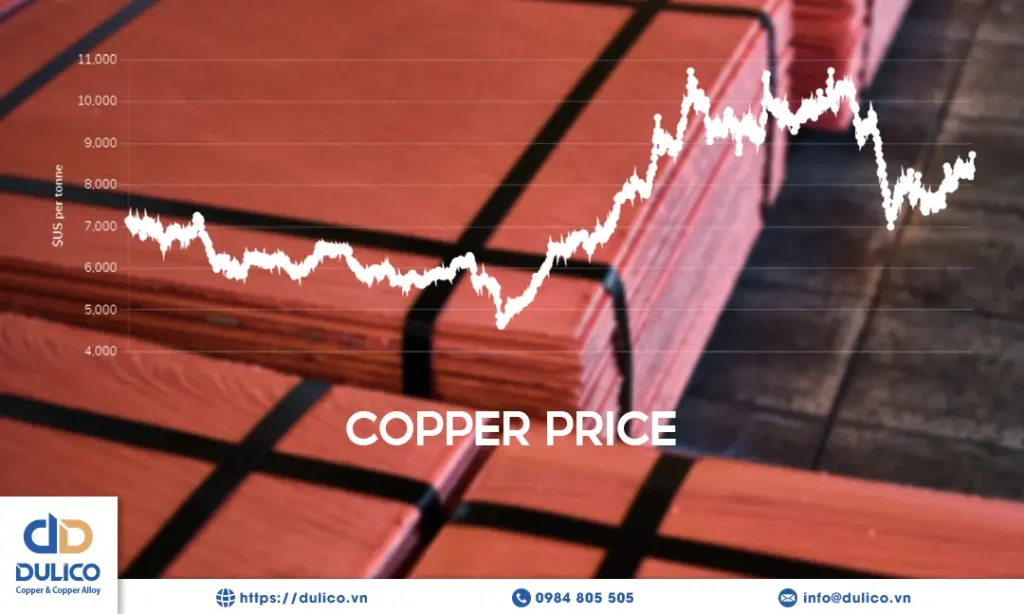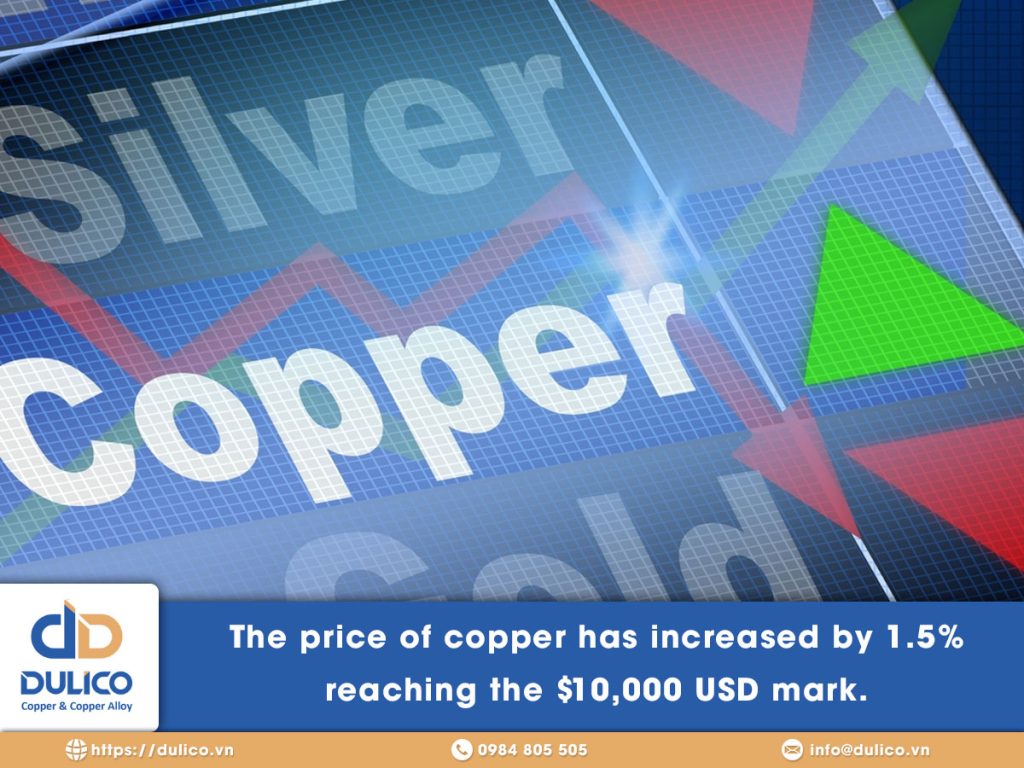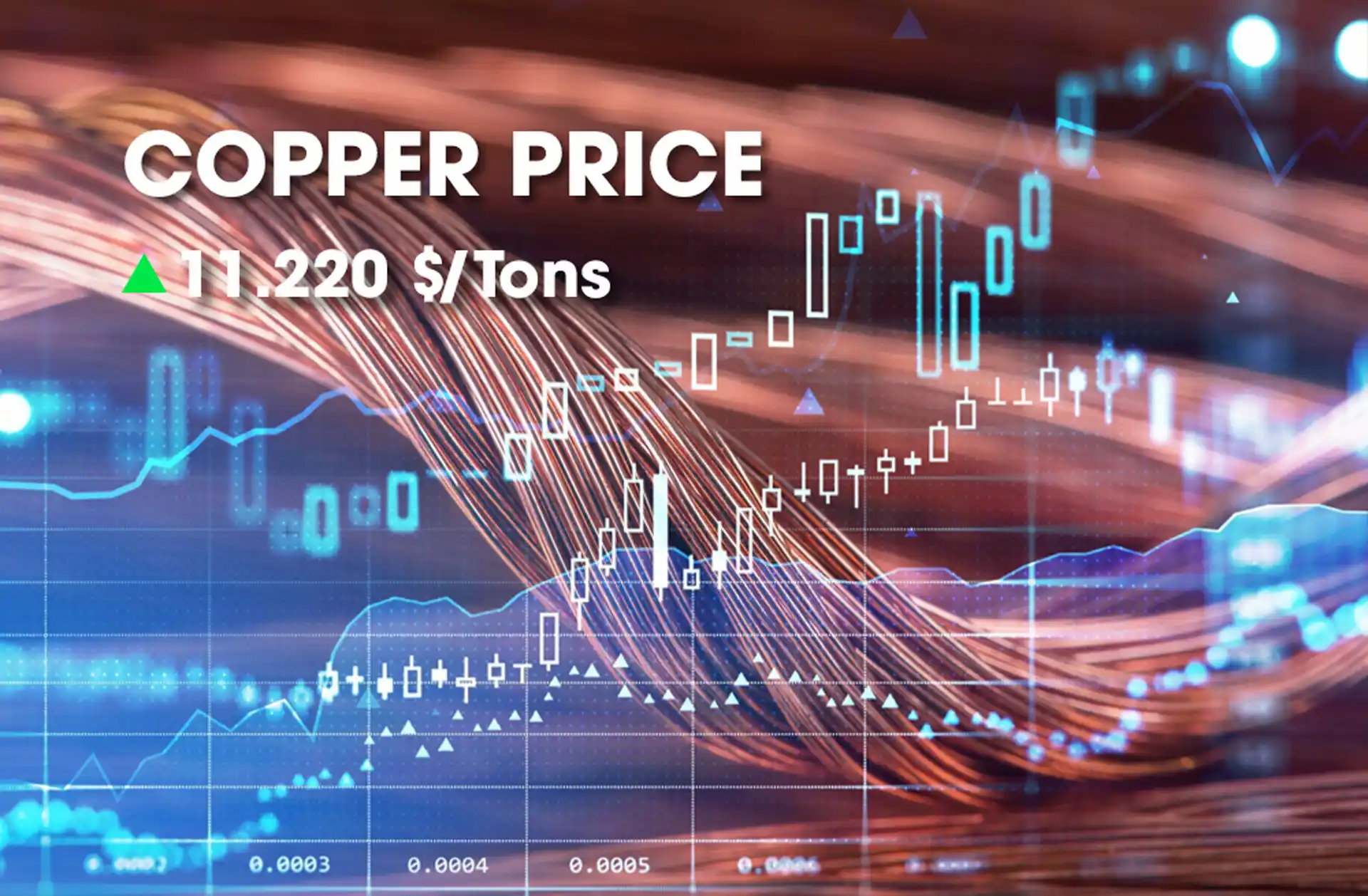Copper prices in the international market have risen on hopes of economic stimulus measures from China, the world’s largest copper consumer, along with the price difference between the London Metal Exchange (LME) and the Shanghai Futures Exchange (ShFE), fueling a wave of buying. Investors are also awaiting US inflation data, which is expected to have a major impact on the market next week.
Taking advantage of arbitrage opportunities
One of the key factors driving copper prices higher is buying activity on the LME to take advantage of lower prices compared to ShFE. Benchmark copper prices on the LME rose 1.3% to $9,110 a tonne, while on ShFE, prices were trading at $10,130 a tonne. This gap has created opportunities for traders to carry out arbitrage transactions, allowing them to buy copper on the LME at a low price and resell it on ShFE at a higher price, boosting buying demand in the market.

Expectations of economic stimulus in China
Expectations of economic stimulus measures from China have also played an important role in pushing copper prices higher. The latest data showed that China’s producer prices fell sharply in August, reflecting the struggling economy. This has led investors to believe that the Chinese government will introduce stimulus measures to boost economic growth and restore consumption demand, especially in the construction and manufacturing sectors – two industries that consume a lot of copper.
Impact of US inflation report and Fed policy
In addition, investors are paying attention to the upcoming US inflation report, which is expected to have a big impact on the US Federal Reserve’s interest rate decision. If the Fed decides to cut interest rates, it could boost economic activity and demand for metals, putting downward pressure on the US dollar. A weaker US dollar makes dollar-denominated metals such as copper cheaper for investors holding other currencies, supporting global copper demand.
Inventories and China Demand Outlook
Copper inventories in LME-approved warehouses are at a five-year high of around 316,450 tonnes. However, an 11% increase in cancelled warrants suggests that inventories could soon be reduced. Many traders expect large volumes of copper to be shipped to China, the world’s top copper consumer, in the coming days.
Copper inventories in LME-approved warehouses are at a five-year high of around 316,450 tonnes. However, an 11% increase in cancelled warrants suggests that inventories could soon be reduced. Many traders expect large volumes of copper to be shipped to China, the world’s top copper consumer, in the coming days.
In addition, the Yangshan premium – an indicator of China’s copper import demand – rose to $62/t, marking an improvement after a decline in July. This suggests that China’s copper demand is showing signs of a stronger recovery.

Other metals fluctuate slightly
While copper prices rose, other metals recorded mixed movements. Aluminium prices fell 0.4% to $2,333/t, lead fell 0.5% to $1,952.5/t and tin fell 0.1% to $30,995/t. In contrast, zinc rose 0.6% to $2,733/t and nickel prices remained unchanged at $15,885/t.
Copper prices rose mainly due to arbitrage trading between the LME and ShFE exchanges, along with expectations of economic stimulus measures from China. However, the US inflation report and the Fed’s decision on interest rate policy will play an important role in determining the future trend of copper prices. Lower inventories and improved demand from China may also continue to support copper prices in the near term.
 Copper Price Today
Copper Price TodayCopper Price Update Today on the Market According to compiled data from sources such as Platts Metals Week, Engineering and...
 Copper Price Increases Thanks to Expectations from China
Copper Price Increases Thanks to Expectations from ChinaOn October 23, 2024, copper price on the London Metal Exchange (LME) increased 0.9%, reaching 9,648 USD/ton. The increase was...
 The price of copper has increased by 1.5% reaching the $10,000 USD mark.
The price of copper has increased by 1.5% reaching the $10,000 USD mark.Early in the morning of September 25, the copper price was recorded trading directly on the LME at 9,844 USD/ton,...
To receive a quotation and detailed consultation on products and technical specifications, please contact:
| Mr. Doan Thanh Tung (David) International Sales 📞+84 975 441 115 ✉️ tung.doan@dulico.vn | Mr. Nguyen Trong Duy (LEO) Director ✉️ duy.nguyen@dulico.vn |


















